What kind of fish live in the Caspian Sea?
Let us discover what species of fish it has.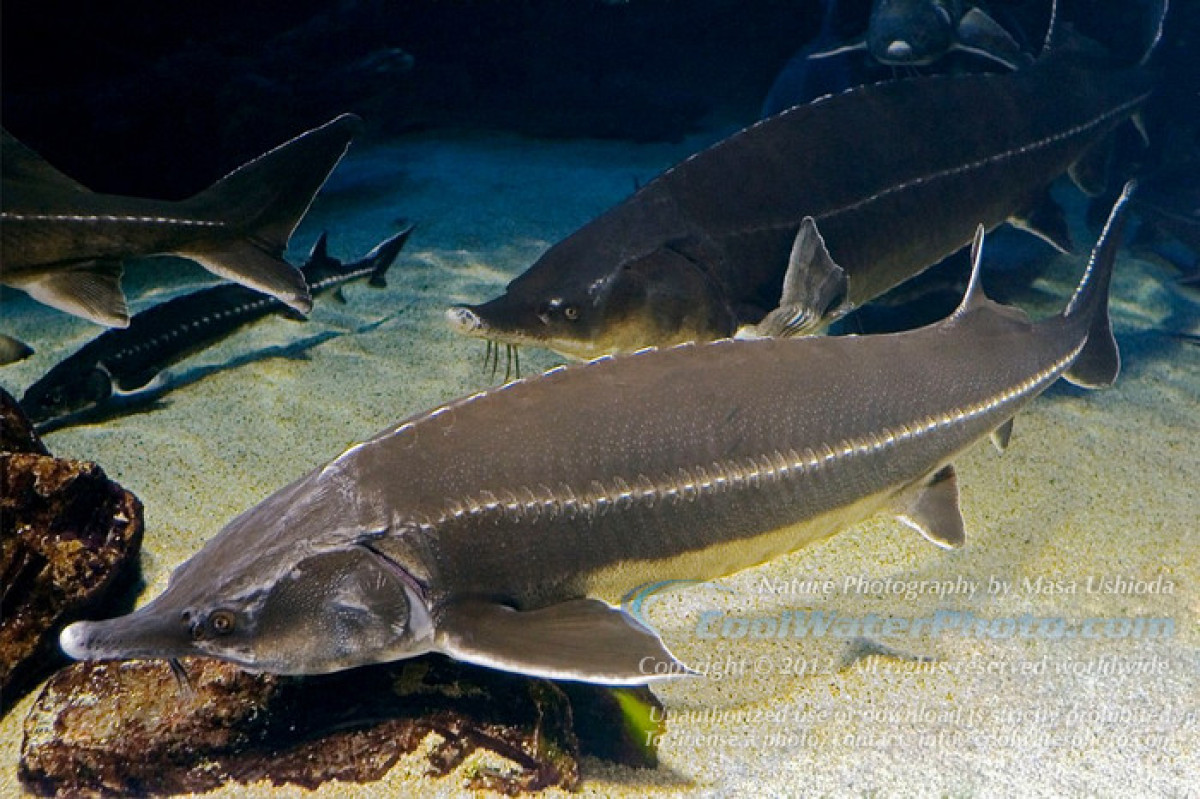
The Caspian Sea is located in the center of Eurasia, far from the oceans, enclosed inland body of water. It is the world’s largest lake, but due to its rise and decline it is classified as the sea. Nowadays the Caspian Sea does not connect to the world’s oceans. The Caspian Sea is 630 miles /1030 km/ long, and 175 miles /435 km/ wide. It consists of 3 parts: Northern Caspian, Central Caspian, and Southern Caspian. Let us discover what species of fish it has.

Sturgeon
In Kazakhstan there are 7 species of sturgeon: beluga, sterlet, Russian sturgeon, Siberian sturgeon, Starry sturgeon, Fringebarbel sturgeon and Syrdarya sturgeon (shovelnose). The sturgeons are bone and cartilaginous fish, different from all the other fish in appearance and structure. The body of elongated fusiform, covered with five rows of bony outgrowths - scutes (one is on the back, two are on the sides and two are on the belly), among these rows, smaller grains and bone plates are scattered. The head is elongated into a conical or spatulate “snout”. The toothless mouth is located at its lower side. The sturgeons are long-life and late-ripening fish, the breeding age of males of various species is between the ages from 5-13 to 8-18 years and females from 8-12 to 16-21 years. In addition, they often have very large size, for example, beluga has maximum a ton of weight and 4-4.5 m in length, although there have been cases of catch of two-ton fish. The exception is shovelnose, which does not grow more than 40 cm. Most of time they spend in the sea (including internal, such as the Caspian and the Aral), and float to rivers in order to spawn. All sturgeons have highly valuable meat and are always caught in large quantities, as well as the delicious product produced from them - caviar. Their number has fallen markedly by the end of the XX century and it is time to regulate the fishery; it is considered to have a special permission to catch sturgeon now and some of them (Fringebarbel sturgeon and Syrdarya sturgeon) to be listed in the “Red Book” of Kazakhstan and catching them is to be prohibited. In Kazakhstan sturgeon species are widespread as follows: beluga, starry sturgeon, Russian sturgeon throughout the Caspian Sea and the Ural; Siberian sturgeon throughout Buhtarminskoe reservoir and the Irtysh; sterlet throughout the Ural, the Irtysh, the Tobol rivers; Fringebarbel sturgeon throughout the Caspian Sea and the Ural River, disappeared in the Aral Sea basin, and acclimatized in the Balkhash basin; and Syrdarya sturgeon throughout the river Syrdarya and its basin irrigation canals.
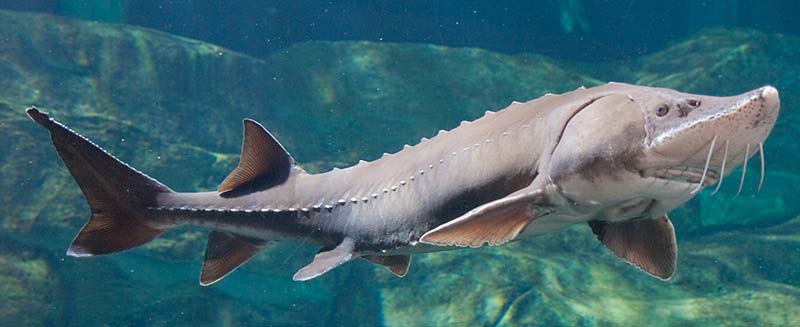
Caspian Lamprey
The Caspian Lamprey is a representative of cyclostomes class. A fish-like animal is up to 55 cm long and up to 200 g of weight. Lampreys have a funnel-shaped mouth, provided with a plurality of teeth horn, which is used as suction. The caspian lampreys spend a major part of their life in the salty waters of the Caspian Sea, and float to the rivers to spawn (in Kazakhstan it is the Ural). It begins in the autumn, when the water temperature drops to 11 degrees. Spawning occurs in the shallows of the river with a rocky or pebbly ground. To overcome the difficult way to the spawning, lampreys accumulate a lot of fat, at the beginning of their way the fat is up to 34% of body weight. In earlier times, these animals are fished and dried, and then lit instead of candles. In European restaurants, lampreys have always been considered to be a delicacy.
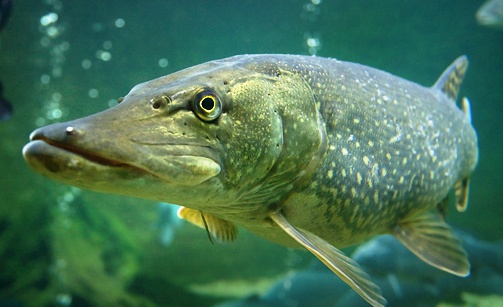
Pike
The pike, a predatory fish well-known from children’s fairytales, is widespread in the northern hemisphere. The pike’s body is elongated, the head is sharply pointed, covered with small scales and has a very diverse motley color that depends on the environment. The head is flattened snout with extended lower jaw. It has many teeth directed sharp edge back in the mouth, so that small fish cannot escape from this trap. The pikes are aggressive predator fish; always swallow with fish’s head. They grow up to one and a half m, weight is up to 30-35 kg, but such large specimens have never been caught. In Kazakhstan the pikes live wherever conditions are suitable (in the river with a slow current and lake with a developed semi-aquatic vegetation), but not only in the Balkhash-Alakol basin and the basin of the river Talas. They spawn in the early spring in shallow water with plants, where sticky eggs stick to. Hatched baby pikes use nutrients from the yolk sac left from the eggs for a while, then feed on small crustaceans : cyclops and daphnia. Reaching 5 cm in length, they are completely transferred to a predatory way of eating, and prey on young fish. They are commercial species.

Roach
The roach is very widespread and highly variable freshwater fish. There are many subspecies of roach, and they differ so much that people call them by different names and find different types: the Azov roach is in the Black Sea Basin, the Caspian roach is in the Caspian Sea, the Aral roach is in the Aral Sea, the Siberian roach is in the Issyk-Kul and in Siberia. But this specie is well-distinguished with a red spot in the upper part of their orange eyes. There are two forms of roach “diadromous” (i.e, living in the sea and spawning in the rivers) : the Azov roach and the Caspian roach, and a “non-anadromous” (i.e, spawning in the same place where they inhabit). Its feeding is very diverse; plant and animal (insect larvae, crustaceans, small molluscs) food is used. Fish of this species do not grow large; in commercial catches they are mostly 18-35 cm. Generally diadromous form has a commercial value during the course of spawning or when they form a huge cluster before hibernation. People consume them in fresh, smoked and dried forms.
Carp
The carp is a big fish of carp family, the original wild form of cultured carp. They have an extensive dense body covered with large dense scales of grayish-green, sometimes gold colors. They grow quickly, by the end of the second year they can reach 30 cm in length and 0.5-0.6 kg of weight, and the maximum growth is up to a meter and 20 kg. They can live maximum until about 30 years. In Kazakhstan carps inhabit nearly all suitable ponds, lakes, rivers and bays with thickets of vegetation. They are omnivorous fish. They are perfect commercial species, fished on an industrial scale as well as by fans. People have had carps as “home fish” for a long time. Compared with other fish, they need low oxygen content in the water, can live with short amount, and very tolerant towards pond conditions. As a result of centuries of selection, a lot of species of carp are derived, the most famous is the mirror carp, and it is named as a mirror carp because of the broad scale, covering its flanks, like a mirror.
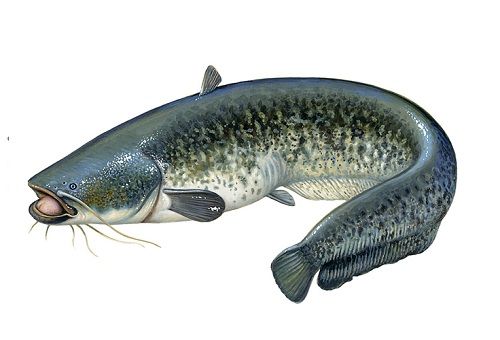
Catfish
The catfish are one of the most popular fish species, the only representative of the order Siluriformes in Kazakhstan. The catfish body is slightly flattened from top to bottom, it has a dark back, a whitish belly; the irregular shape patches are scattered on the sides. The huge jaw has a pair of long barbels on the upper jaw and two pairs of small barbels on the bottom jaw (that is why in other languages it is called the cat-fish). It is an omnivorous fish; a large share of its food is fish, frogs, molluscs, and sometimes even waterfowl. On a hot day, the catfish prefer lying under a snag or in deep holes. The catfish spawn on shallow ground, laying eggs in the nest of the original plant material. At first before the larvae, the male protects the nest with eggs. The catfish grow quickly and in 3-4 years they become matured fish. In general, the catfish grow up to 5 m and 300 kg. This fish is one of the most popular in the recreational and sport fishing.They are valuable food fish.
Silver Carp
The silver carp is a medium-sized fish of the carp family. Since ancient times they have been popular in pond breeding and were acclimatized as widespread as it is now difficult to say what their original habitat was. An interesting feature of its biology is that in nature they are known to have homosexual behavior, consisting of only one female. For breeding males of other closely related species are enough (tench, carp, etc.), however in the development process the offspring inherits the attributes of only mother. Therefore, in pond breeding only female populations are used. This small up to 45 cm in length and 1 kg (sometimes up to 3 kg) of weight fish feed on plankton. In Kazakhstan they live in the Caspian basin, the Irtysh, self-contained water-bearing of North and Central Kazakhstan, the Sarysu and the Syrdarya, farmed in many fish farms. The plasticity of this fish is amazing; it is well known that an aquarium goldfish was derived from the silver carp nearly a thousand years ago in China. Due to prolonged breeding in China, Korea and Japan, a few hundred species of this fancy fish were created.
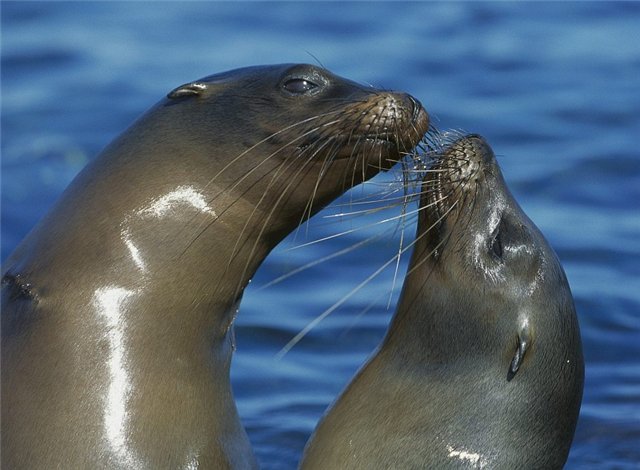
Caspian seal
It is one of the members of seal family, pinniped animal. It is also called “tulen” in Kazakh language. The Caspian seal body is 125-160 cm in length, weighs 65-80 kg. Due to living in water its body adapted to this environment. Their neck inosculated to the body, therefore, the head is not seen well; earless, legs are similar to flappers, have thick palamas between toes. They have black spots on the back and a white belly. The Caspian seals live only in the Caspian Sea. They are rarely seen in the downstream of the Volga and the Ural Rivers. Especially, mostly in winter they can be found on islands in the northern part of the Caspian Sea. Generally, they live in water. Only to cast the skin, to mate and to give birth they go on islands or on floating blocks of ice. The period of casting is from the middle of February to March. One year later sometimes they get 2 puppies (a white coat seal). Mother feeds baby seal with fat milk for 3-4 days. After 2-3 months, baby seals get fatter and called “a fat seal”, after a year their fur changes in color several times, so they are called “a black seal”. In general, they feed on crustaceous and mollusks. Fur and fat of the Caspian seals are very expensive, so they are commercially important animals. The adult seal can get 40-70 kg fat in autumn. It is mostly used in medicine and perfumery products. There are about 400-450 thousand Caspian seals in the Caspian Sea.
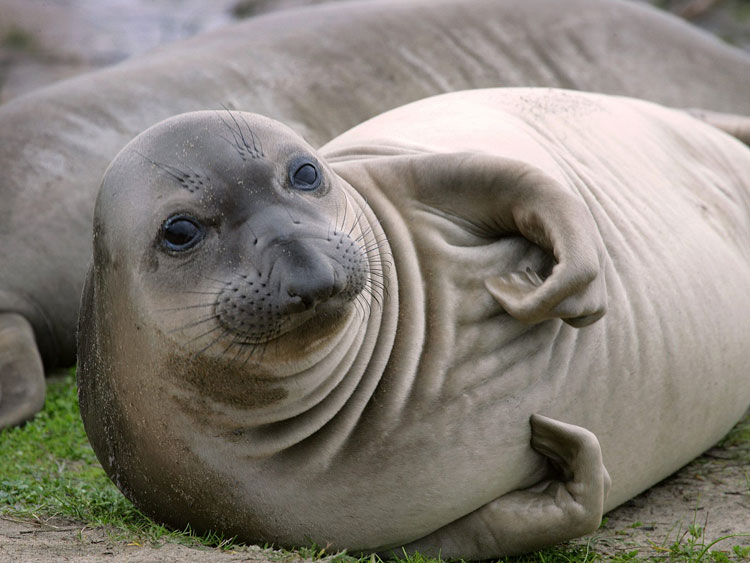
Caspian barbel
They are one of the Aral barbel species, diadromous fish. In general, they live in the southern part of the Caspian Sea and swim in the rivers flowing into the sea from south and west. They are rarely found in the north of the Caspian Sea. Their body is 56-76 cm (up to 103 cm) in length, about 3-6 kg (up to 14,5 kg) of weight. The shape and the total morphological character are similar to Aral barbel (main difference is their habitat). They become matured fish at the age of 5. They spawn in the Ural River from the end of April to August. In spring they spawn in the flow at 20-23° C (115-1259 thousand). The Caspian barbels feed on crawfish, insects and larvae. Their food consists of plants and organic materials. The Caspian barrel meat is very delicious; they have never been in large amount in the Caspian Sea, so they have little commercial significance.
Caspian salmon
They are one of the salmon species. Generally, they live in the south-west of the Caspian Sea. They are rarely found in the north of the Caspian Sea. They swim in the rivers falling down from Caucasian mountains. At the beginning of the XX century, even though they were in small amount, but they swam in the Volga and Ural rivers. Since 1980 there has been no information about salmon catch in the rivers. The Caspian salmon is the biggest one among salmon species; it is 100 cm long; an adult salmon weighs 2-7 kg. It is similar to the Black sea salmon, the difference is their narrow tail. The Caspian salmon in the Caspian Sea of Kazakhstan territory has not been studied. Usually they are diadromous fish. At first they live in the rivers, and then they swim into the sea and grow up to the adult age of 3-5. They spawn (until 45 thousand) in the depth of the river in October or November (when the temperature of water reaches 3-13°C). Hatching takes 26-90 days. There are males which do not move to the sea and stay in the river. The Caspian salmon lives for about 10 years. As other salmons, the growth of the Caspian salmon depends on the environment. Small salmons feed on larvae, amphipoda, adult salmons feed on fish (kilka, silverside, small fish) mysids, prawns. The number of the Caspian salmon has never been high. They rarely inhabit the Caspian Sea, but in the south-west part. Over the years the number of the Caspian salmons gets less, so they were registered in the “Red Book” of Kazakhstan.
By Aisha Kerey
The reference: Animal world of Kazakhstan. Scientific society publishing. – Almaty: “Almatykitap” a publicly held corporation, 2003. -128 pages. “Alem gazhaiyptary” (Wonders of the World) Moscow, ROSMAN 2012.
 Subscribe to our Telegram channel and be the first to know the news!
Subscribe to our Telegram channel and be the first to know the news!